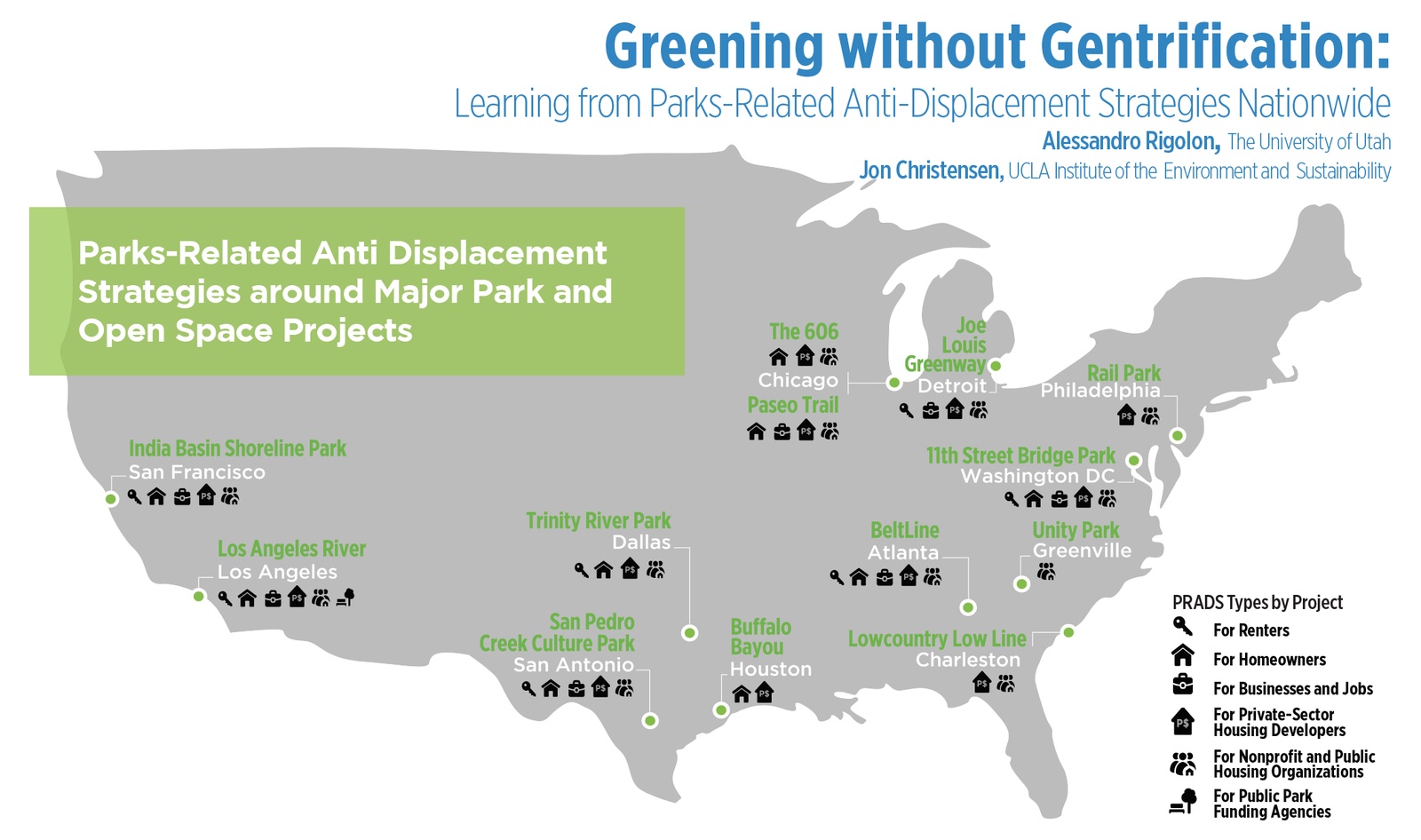When large parks are built in historically marginalized urban areas, they can contribute to “green gentrification,” a process involving increases in housing prices and the influx of new, wealthier and often white residents in low-income communities of color. Research shows that the threat of green gentrification is real in many cities, and it can lead to the displacement of longtime residents that many park equity efforts are designed to serve. Policymakers, planners, parks and housing advocates, and local community-based organizations are increasingly recognizing this threat and taking action to limit displacement.
In this policy report, we share the results of an ongoing study to identify and classify parks-related anti-displacement strategies (PRADS). Through a nationwide search, we identified 27 large park development projects in marginalized neighborhoods in 19 cities. We reviewed policy documents and media accounts and conducted interviews with project stakeholders. The good news is that stakeholders in about half of the projects we surveyed, including many park advocates and local community organizations, are proposing and actually implementing PRADS. The bad news is that the other half of the projects have not taken concrete actions yet.
Download the report by Alessandro Rigolon from the Department of City & Metropolitan Planning at the University of Utah and Jon Christensen from UCLA’s Institute of the Environment and Sustainability: Greening without Gentrification: Learning from Parks-Related Anti-Displacement Strategies Nationwide.
Read at article on the findings and recommendations by Rigolon and Christensen in Parks & Recreation magazine: https://www.nrpa.org/parks-recreation-magazine/2019/december/greening-without-gentrification/
Read a story about the report at The Atlantic CityLab: https://www.citylab.com/equity/2019/09/gentrification-causes-new-public-parks-study-city-data/597580/

